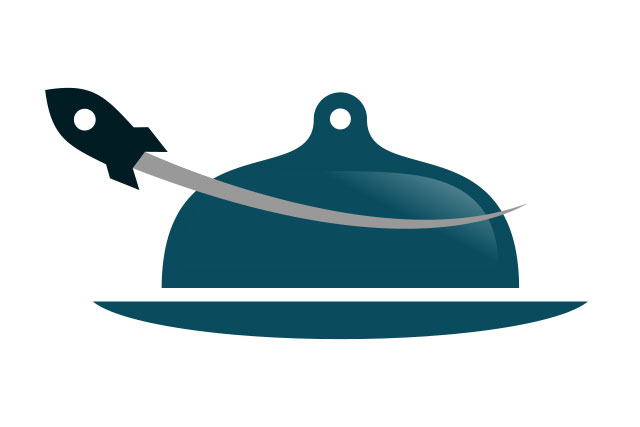
In my last blog, I discussed how to improve efficiencies in an existing food production business. But what if you’re looking to launch a beverage, snack or meal into the marketplace entirely from scratch?
Here, I call on close to 30 years of experience to share my top tips for launching a new product in the food and drink industry.
1. Find a gap in the market
To launch a new food product, first find your niche. You’ll be at the ideas stage here, so important questions to ask before you invest time and include how does your idea compare to what’s on the market already, and what does it offer that other food (or drink) items don’t?
Getting this right can pay huge dividends down the line. For instance, between 2014 and 2019, the number of vegans in the UK quadrupled. Anyone who correctly spotted the potential there and launched a well-packaged, well-branded and well-marketed vegan food product seven years ago has in all likelihood made (somewhat ironically) an absolute killing in the interim.
2. Define your ideal consumer
One of the most important early steps of any product design is knowing who you’re designing it for. That’s no less true when it comes to developing new food products for a changing marketplace. Having an ideal buyer in mind means you can target everything from flavour profiles to packaging, point of sale material, online marketing and TV advertising to appeal to the right eyes and ears. Remember, though – in some cases you should also factor in not just the person who’ll eat or drink it, but also those who’ll buy it for them. (More on that in a little later).

3. Conduct product research
If points one and two above might seem like common sense, this is where I begin to get more granular on how to launch a food product from nothing.
Thoroughly researching at this stage will help you confirm or dispel some of your earlier assumptions and is likely to shape your product strategy for years to come.
Research can take many forms, including:
- Conducting one-on-one interviews with people in or around your target demographic
- Hosting focus groups to give you a more well-rounded idea of what your customers want, like, dislike and haven’t yet considered
- Putting out online surveys (easily done using a tool like SurveyMonkey or similar) – ideally one that incentivises consumers to take part, in order to drive maximum engagement
- Using social media analytics tools to get a feel for the products in your space that are being talked about for both good and bad reasons
- Using online resources like Statista, Mintel and more to build a clearer picture of the food and drink market and where your product might fit into it.
The research phase isn’t just limited to understanding your competition, either. You should also use this time to get a sense of suitable manufacturing partners for your food or drink item, which will directly feed into the next item on my list…
4. Decide your product cost and overall budget
Exploring how to launch a food product in the UK (or anywhere else, for that matter) without taking a magnifying glass to money matters would be an enormous oversight. After all, the price your product retails for will directly impact your profit margins, and needs to be considered against all of the other costs involved with food production, packaging, marketing and so on.
The good news here is that if you’ve done your research effectively, you’ll have an excellent grasp of what reasonable, competitive costing looks like, as well as the manufacturing and logistical overheads. That will all feed into getting your food brand off the ground.
5. Get food and drink certified
The food and drink business is understandably one of the most heavily regulated on the planet, so you’ll need to make sure your products conform to all relevant health and safety standards. Make sure you register your business with the government 28 days before you open and visit the Food Standards Agency to ensure you’re up to speed on all relevant regulations you’ll need to adhere to.
6. Source funding
Successfully launching new products in a packed marketplace can take some serious funding – possibly far more than you first started with, even if you had some early backing. There are several different options if you need to boost your funding further:
- Contact your local authority or chamber of commerce about grants and loans that might be available. You never know, they might have a scheme set up for a business exactly like yours! You may also want to investigate direct grants (which typically ask you to foot 50% of the value) and/or government-backed soft loans (which typically offer much better terms than banks).
- Consider crowdfunding opportunities. Crowdfunding lets you go straight to your potential audience and ask them for money upfront to develop your product. People can invest at different tiers for different levels of rewards, so if you make a compelling enough case, they may even go big on their initial investment. There are plenty of crowdfunding platforms out there that cater for food and drink businesses, and this article lists some of the very best.
- Do something really daring: There are many ways for the aspiring food and drink entrepreneur to gain a following and funding that aren’t for the faint of heart. But if you’re confident enough in your vision and business plan, applying to appear on Dragon’s Den is one of my most intrepid tips for launching a new product in the food and drink industry. (But it certainly won’t be for everyone!)
7. Design a look and feel for your product

A compelling food or drink brand is about much more than what’s in the box, behind the wrapper, or in the bottle or carton. An eye-catching brand that’s smartly targeted to a specific consumer group has a much better chance of succeeding in a packed marketplace than one with less thought put into the aesthetic side.
Also, remember where I mentioned considering the purchaser? This is where you’ll want to factor that in. Pestered parents, in particular, might hear about a new food brand first from their children, but will be unlikely to want to purchase something they see as vulgar, untrustworthy, or totally unrelatable. Walking that fine line can be tricky, so taking the time to get it right is definitely worth it.
8. Pick the right partners
There comes a point when developing new food products for a changing marketplace that you have to go all-in and make the initial idea a full-blown reality. But to do that, you’ll need to find the right partners who can help make it happen. Choosing the right manufacturer, packaging vendor and food and drink distributor are key parts of a food and beverage product launch.
My advice? Take your time, ask all the right questions – then ask them again if necessary – and bear in mind that your initial launch needs might need to scale if your product takes off in the way you’re hoping it will. Also, be excited! By now, you’ll have come a long way, and you’re closer than ever to seeing your product on shop shelves.
9. Market your product and brand online
My final tip for launching a new product in the food and drink industry is to take your product marketing into your own hands and make the absolute most of every avenue available to you. And thankfully, in the modern world that’s quite a lot of ways to get your message out there!
Start by building a responsive website that will work on desktop and touch screens alike, then give equal initial consideration to aspects like social media marketing, search engine optimisation, blogging, video, in-person attendance at local and national tradeshows, and even partnering with those who can help – like well-known food bloggers, or even other brands!
Need help taking your food business forwards?
As an experienced marketer with years of experience working in food and beverage, I have the know-how to help you manage your working processes, the strategies to optimise management of your food or drink business, and the connections to take your operations to the next level.
To find out how my expertise in food and beverage can help your business, get in touch today.
